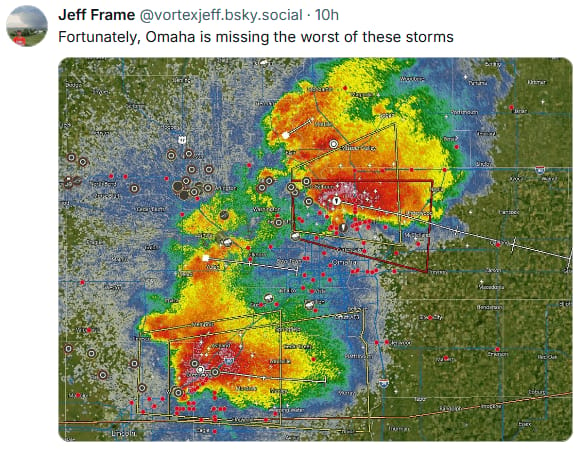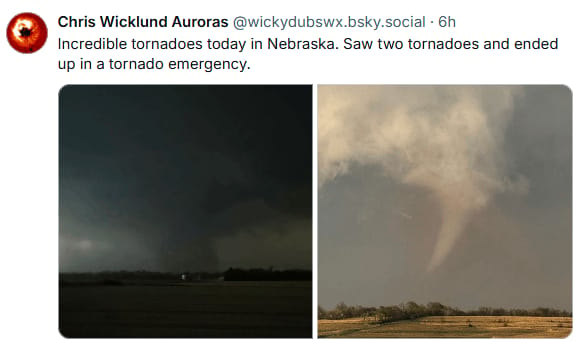- The Weather Retort
- Posts
- Stormy Easter weekend for many in the central states
Stormy Easter weekend for many in the central states
Tornadoes struck the Midwest late Thursday to kick things off.
Many spots in the eastern United States are seeing the warmest weather of the year so far Friday and into the weekend, as a dip in the jet stream out west helps amp up high pressure east. The jet stream dip is our real story the next several days.
Weather Watch
Wild Easter weekend. A severe weather threat continues daily through the weekend. Another atmospheric river targeting central states will likely cause more flooding in some of the same regions hit hard early in the month. Saturday features a Level 3 of 4 flood risk from the Red River region of north Texas to around St. Louis.
April snow. The Rockies and portions of the high plains are in the middle of a spring snowstorm. As much as a foot and a half has been reported in Montana. Snow was sticking in Denver and Cheyenne where up to a few inches are possible. April is actually peak snowfall season for a good chunk of the region. It might be tough to outdo what just fell in the Alps, though.
Lightning links
American Meteorological Society and National Weather Association: Stand Up for NOAA research – the time to act is now.
DOGE cuts could lead to ‘very big error’ in ‘crucial’ hurricane forecasts, expert says.
Weather balloon cuts raise alarm: 'Not a good sign'.
#RealSpring™ has arrived
Tornado Alley Season™ officially got underway Thursday as twisters struck Nebraska and Iowa late afternoon then into the night.
Yes — there have been lots of tornadoes this year already, but generally not in old fashioned storm chasing territory of the Plains and Midwest, AKA classic Tornado Alley. While there are passable spots for observing weather further east, such as the Mississippi River Valley region of Arkansas, chasers historically waited until thunderstorms migrated to the open range further west.
At least a handful of tornadoes were observed, along with huge hail, including near Omaha. A tornado emergency was issued for Essex in southwest Iowa after dark.
There was also the always incredible scenery the flatlands have to offer.
As storm chasing popularized, it is now an all year and all over endeavor. But the stuff that is regular — what people fly halfway around the world for — focuses on the southern Plains in April to May, then inches farther north to the Canadian prairies by July and August.
In addition to the more favorable chase terrain — you can really see forever in spots — storm motions tend to slow down heading deeper into the warm season, thanks to a weakening jet stream. Generally, much more enjoyable than racing after a storm through the forest farther east in pre-season.
About
Weekday morning newsletter by a journalist/forecaster. Connecting weather and climate change dots while occasionally stirring the pot.
Find this interesting? Forward it on and tell a friend!


Reply